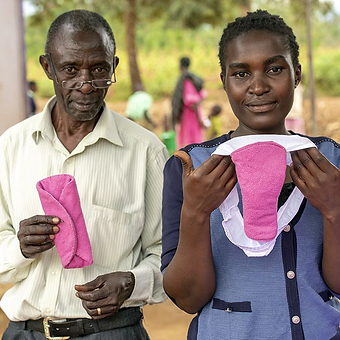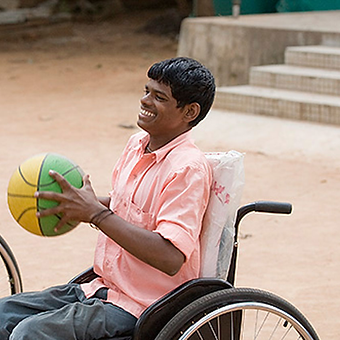_edited.png)
Practical Solutions
The Contentious Aid Project is a solution based organisation. In response to the problems listed on our ‘local perspectives’ page, we have compiled corresponding solutions to overcome them. This way aid can be made more inclusive and responsive to the needs of everyone in the affected community.
.png)
Transparency
Minimise management and fundraising expenditure wherever possible and be open and honest about where donations go, and why. The Doctors Without Borders charity is a good example of this, providing statistics so customers know how far their donation reaches - 88 percent of donations go towards their programs, 11 percent for fundraising and only 1 percent for management.
.png)
Gender Inequalities
Ensure that appropriate research has been done surrounding womens sanitation, especially focusing on menstruation hygiene and child provision. Include help surrounding UTI’s as this is something highly left out by many charities, putting many women’s kidneys at risk and also allowing for high amounts of suffering. Above all, remember to account for the vastly different needs of men and women when setting up any new venture.
.png)
Disabilities Disadvantage
Strategically install water taps within walking distance so safe clean water can be available for the disabled. ACTS for water has been practicing strategic planning in tap stand installations so village members do not have to walk over 500 meters to access clean water. Build disabled toilets so that people with disabilities can use toilets like everyone else, and assess what additional medical or sanitary provisions can be made to accommodate them in the community.
If there are any stigmas surrounding mental health or physical disabilities in that community, consider working with local leaders and educators to share different perspectives and find new ways of treating affected individuals so that they are not left behind.
.png)
Safeguarding issues
Following the particular incident at Oxfam, the charity took measures to improve their safeguarding policies, which include increasing the number of safeguarding specialists, establishing safeguarding focal points, creating online safeguarding training tools, introducing single case management system in every country to facilitate investigations, agreeing on federation-wide commitment on feminist principles and equality, etc.
Similarly, many charities have committed to safeguarding by sharing joint agreements. For example, ActionAid UK, Care International UK, Christian Aid, the International Rescue Committee UK, Oxfam GB, Plan International UK and Save the Children UK signed a set of commitments to safeguard rights and obligations of relevant stakeholders. Having a network that shares the same goals and values enables the general public to scrutinise charities and raises the standard of safeguarding.
.png)
Vested motives to aid distribution
This is a tricky one, and something that will rely on initiative and an understanding of your particular circumstances in order to mitigate it. But as far as possible, do not let profit factor in when distributing aid and if necessary, apply for more funding from a higher governmental organisation where you cannot meet the costs. Be aware of personal bias rooted in what benefits your organisation in order to understand how it affects decision making processes.
.png)
Language and cultural norms
Carry out an assessment of the culture before rolling out any initiatives, placing the authority in the hands of locals. Communication should be at the heart of any new venture which means that language needs to be shared as a very minimum requirement. Traditions must be respected even when they are contested, and every effort must be made to integrate policies and culture together so that the community does not have to lose any element of their identity in order to benefit from humanitarian aid.
.png)
Faith and belief
Increase the diversity of staff so charities are composed of members from a variety of religious backgrounds who can understand the needs and practices of people they are helping. Where charities serve in areas of unfamiliar rituals, at least one representative from those areas shall be contacted as the middleman to ensure adequate aid is given and religious beliefs are respected and upheld.
Religious charities should be cautious not to impose their religion on those in need of aid. For example, Christian charities should avoid providing a bible with their support, as this can be conflicting to communities who follow different religions. It also goes without saying that charities should not avoid helping communities with differing religious views, and instead place an emphasis on unconditional aid.
.png)
Giving aid with short term solutions
Setting up long lasting systems which can be sustained by the people themselves - this goes beyond providing fresh water etc, but involves sharing knowledge and setting up jobs and training programmes e.g. The charity Femme International who train local women to become sales agents of menstruation products as part of their Twende Initiative. This gives locals the means of supporting themselves.
.png)
Ignoring the voices of those in need
If possible a ‘community impact assessment’ should be undertaken (this is where any theoretical unplanned negative implications of schemes are foreseen and mitigated), impacted members of the community consulted and brought on board, and the authority of the local authorities should always be respected.
.png)
Considerate portrayal of aid recipients
Coordinating with potential donors in a sensitive way which does not infantilize or enforce stereotypes about the affected communities.
